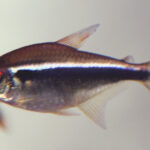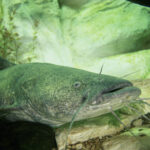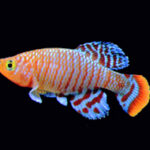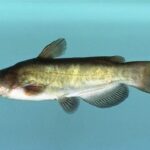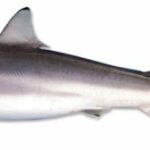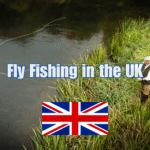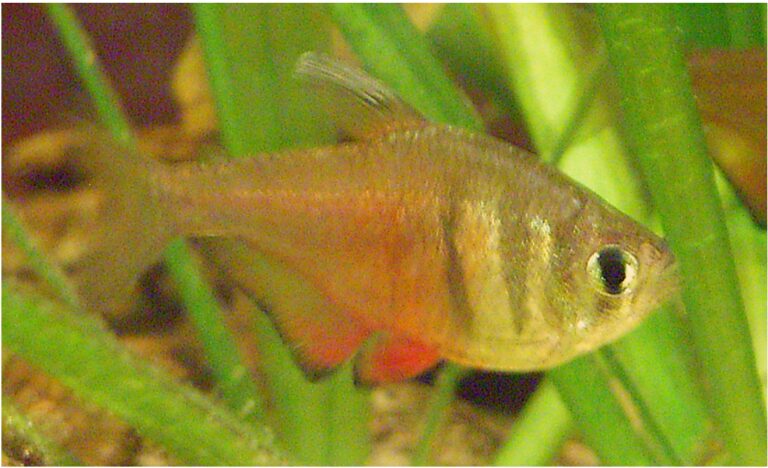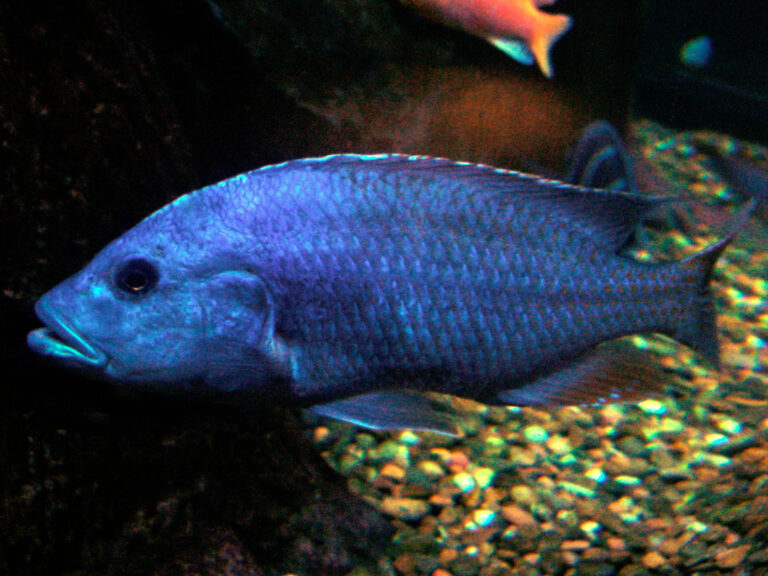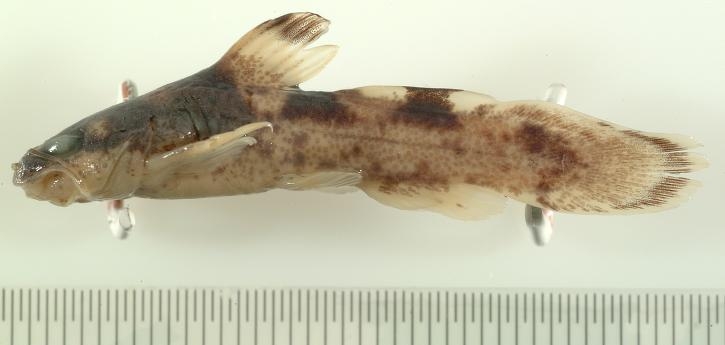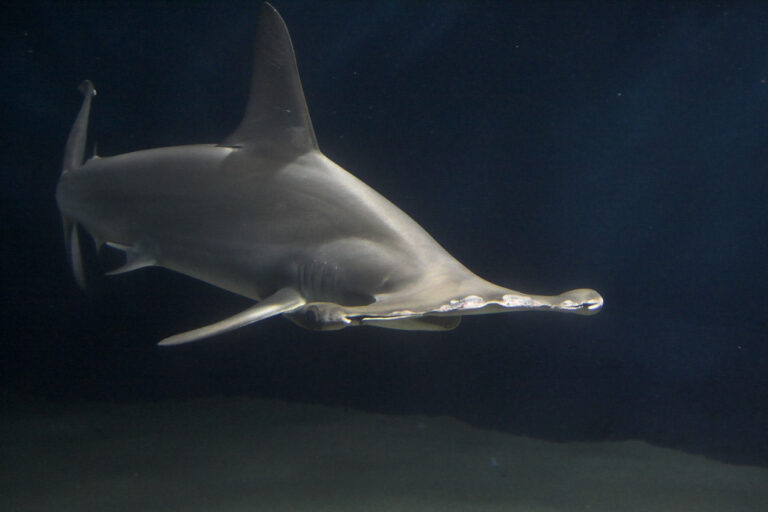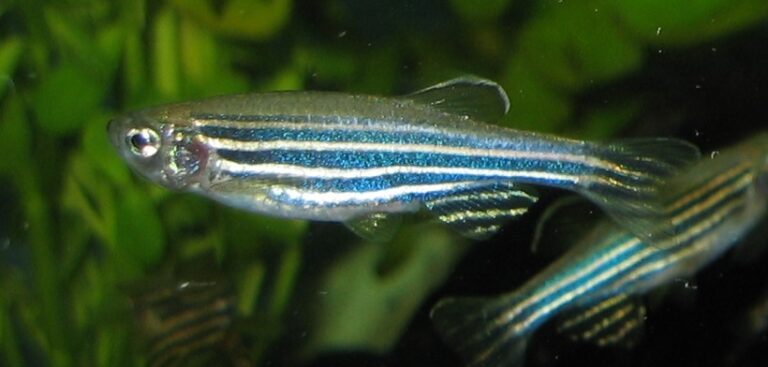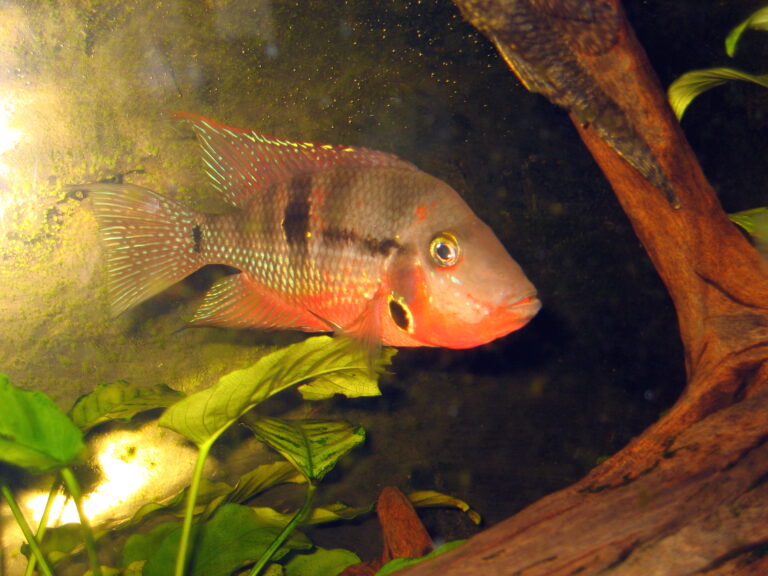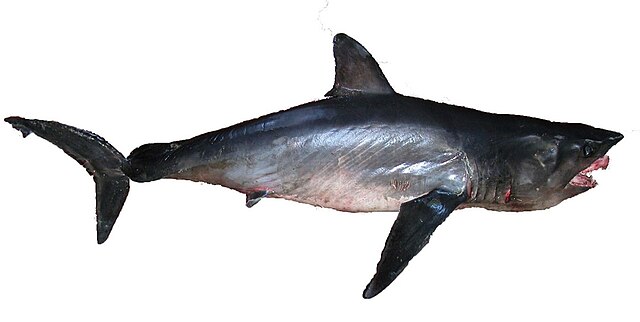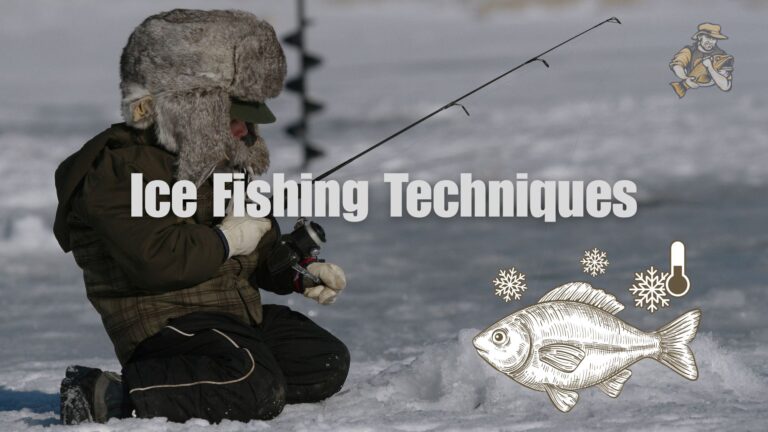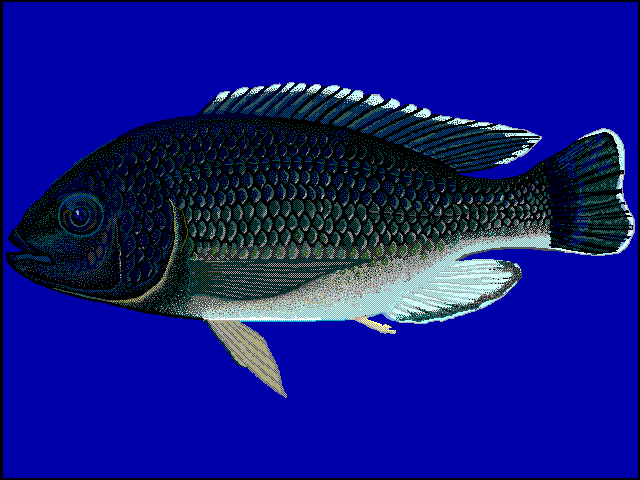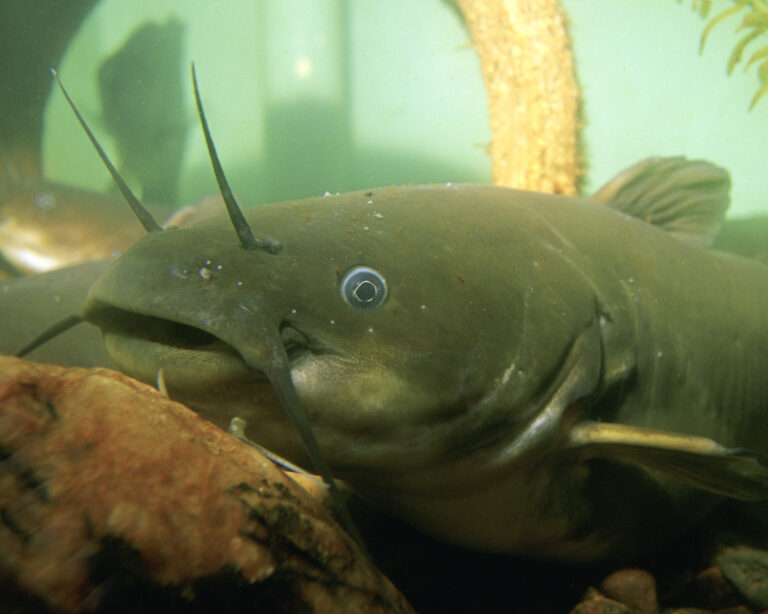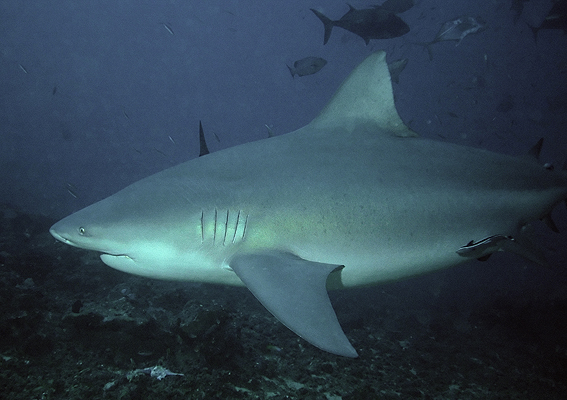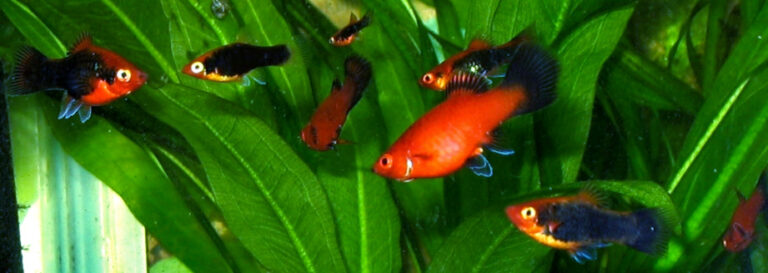Channel Catfish
By Ryan Maron | Last Modified: June 27, 2025
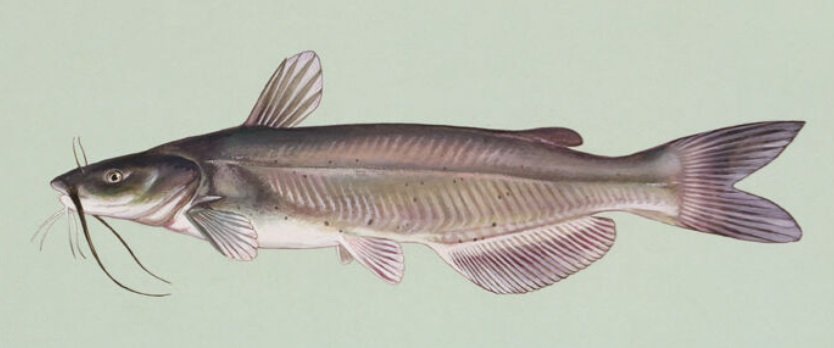
The Channel Catfish stands as one of North America’s most recognizable and economically important freshwater fish species. Known scientifically as *Ictalurus punctatus*, this robust member of the catfish family has earned its place as both a cornerstone species in aquatic ecosystems and a prized target for recreational and commercial fishing operations across the continent. Channel Catfish serve as vital predators in freshwater food webs, controlling populations of smaller fish, crustaceans, and aquatic invertebrates while simultaneously providing sustenance for larger predatory species and supporting multi-billion dollar fishing industries.
These adaptable bottom-dwellers have successfully colonized diverse aquatic habitats from the Mississippi River basin to artificially stocked farm ponds, demonstrating remarkable ecological plasticity that has made them one of the most widely distributed catfish species in North America. Their distinctive whisker-like barbels and keen sensory abilities allow them to thrive in environments where other fish species struggle, particularly in turbid waters with limited visibility.
| Feature | Details |
|---|---|
| Common Name | Channel Catfish |
| Scientific Name | Ictalurus punctatus |
| Family | Ictaluridae |
| Typical Size | 40-66 cm (16-26 in), 1-4 kg (2-9 lbs) |
| Habitat | Rivers, lakes, reservoirs, ponds |
| Diet | Omnivorous bottom-feeder |
| Distribution | North America, introduced globally |
| Conservation Status | Least Concern |
Taxonomy & Classification
The Channel Catfish belongs to the family Ictaluridae, commonly known as North American freshwater catfishes. Within this family, *Ictalurus punctatus* represents one of the most successful and widespread species, sharing its genus with other notable catfish including the Blue Catfish (*Ictalurus furcatus*) and White Catfish (*Ictalurus catus*). The species was first scientifically described by Constantine Samuel Rafinesque in 1818, establishing its taxonomic foundation that remains valid today.
Phylogenetic studies have revealed that the genus *Ictalurus* diverged from other catfish lineages approximately 15-20 million years ago during the Miocene epoch. The Channel Catfish evolved specific adaptations that distinguished it from its sister species, including unique sensory capabilities and reproductive behaviors that enhanced its survival in diverse freshwater environments. Modern genetic analysis has identified several distinct populations within *I. punctatus*, though these remain classified as subspecies rather than separate species.
The family Ictaluridae encompasses approximately 51 species distributed across North America, with Channel Catfish representing the most economically and ecologically significant member. Their classification within the order Siluriformes places them among the global catfish assemblage, though North American ictalurids possess unique characteristics that separate them from their African, Asian, and South American relatives.
Physical Description
Channel Catfish exhibit distinctive morphological features that make them easily identifiable among North American freshwater fish species. Adult specimens typically display a streamlined, laterally compressed body design optimized for bottom-dwelling life and efficient swimming through various aquatic environments. Their coloration ranges from olive-brown to slate-gray dorsally, transitioning to pale yellow or white ventrally, with numerous small black spots scattered across the sides and back of younger individuals.
The most characteristic feature of Channel Catfish remains their eight prominent barbels, commonly called whiskers, which serve as highly sensitive chemoreceptors. Four barbels extend from the upper jaw, while four shorter barbels emerge from the lower jaw area. These sensory organs contain thousands of taste buds capable of detecting minute chemical concentrations in the water column, allowing the fish to locate food sources and navigate in turbid conditions where visual cues prove inadequate.
Channel Catfish possess a scaleless skin covered in mucus that provides protection against parasites and bacterial infections. Their dorsal fin features a sharp, serrated spine capable of inflicting painful wounds on predators or unwary anglers. Similarly, both pectoral fins contain venomous spines that can inject mild toxins, causing localized pain and swelling. The adipose fin, a small fleshy appendage located between the dorsal and caudal fins, distinguishes catfish from most other North American freshwater species.
Adult Channel Catfish commonly reach lengths of 40-66 centimeters and weights between 1-4 kilograms, though exceptional specimens can exceed 75 centimeters and weigh over 15 kilograms. Sexual dimorphism becomes apparent during breeding season, with males developing broader heads and more pronounced muscle definition, while females tend to grow larger overall and develop distended abdomens when carrying eggs.
Habitat & Distribution
Channel Catfish demonstrate remarkable habitat versatility, occupying diverse freshwater environments across their extensive range. Their native distribution encompasses the Mississippi River basin, Great Lakes region, and tributaries throughout the central and eastern United States, extending from southern Canada to the Gulf of Mexico. Natural populations thrive in large rivers, reservoirs, lakes, and even smaller streams with sufficient depth and appropriate water chemistry conditions.
These adaptable fish prefer habitats with moderate to slow current velocities, sandy or muddy substrates, and abundant cover in the form of submerged logs, rock piles, or undercut banks. Channel Catfish tolerate a wide range of water temperatures, remaining active in conditions from 2°C to 35°C, though optimal feeding and growth occur between 24°C and 29°C. Their ability to survive in waters with dissolved oxygen levels as low as 3 parts per million allows them to persist in environments that would stress or kill many other fish species.
Successful introductions have established Channel Catfish populations throughout North America beyond their native range, including western states, Alaska, and parts of Canada. International introductions have created populations in Europe, Asia, and South America, though these non-native populations sometimes create ecological concerns due to their competitive advantages over indigenous species. FishBase reports that Channel Catfish now inhabit waters on every continent except Antarctica and Australia.
Seasonal habitat preferences influence Channel Catfish distribution patterns within their occupied waters. During warmer months, they frequently inhabit shallow areas near shorelines, particularly around structures that provide cover and concentrate prey species. Winter behavior drives them into deeper water where temperatures remain more stable and metabolic demands decrease.
Diet & Feeding Behavior
Channel Catfish function as opportunistic omnivores with feeding strategies that adapt to seasonal availability and environmental conditions. Their diet encompasses a broad spectrum of food sources, including aquatic invertebrates, small fish, plant matter, detritus, and occasionally carrion. This dietary flexibility contributes significantly to their ecological success and widespread distribution across diverse aquatic environments.
Juvenile Channel Catfish primarily consume zooplankton, small crustaceans, and aquatic insect larvae, gradually transitioning to larger prey items as they mature. Adult specimens actively hunt for crayfish, mollusks, worms, and various fish species, while also consuming significant quantities of plant material, algae, and organic debris. Their feeding behavior intensifies during dawn and dusk periods, taking advantage of reduced light conditions that favor their enhanced chemosensory abilities over visual predators.
The sophisticated sensory system of Channel Catfish enables highly effective foraging strategies. Their barbels contain approximately 250,000 taste buds, far exceeding the sensory capacity of most fish species and allowing detection of food sources buried in sediment or hidden within complex structures. This chemoreceptive advantage proves particularly valuable in turbid waters where visual hunting becomes impractical.
Seasonal feeding patterns reflect temperature-driven metabolic changes and prey availability fluctuations. Summer feeding reaches peak intensity as warm water temperatures accelerate metabolism and abundant prey supports rapid growth. Winter feeding decreases substantially as cold temperatures reduce metabolic demands and prey activity, though Channel Catfish continue feeding throughout the year in most climates, unlike some fish species that become largely inactive during cold periods.
Behavior & Adaptations
Channel Catfish exhibit complex behavioral patterns that reflect their adaptation to diverse freshwater environments and ecological niches. Their primarily nocturnal activity patterns take advantage of enhanced chemosensory abilities during periods when visual predators experience reduced hunting success. During daylight hours, they typically seek shelter in deeper waters, under logs, or within other structural cover, emerging at dusk to begin active foraging.
Social behavior varies significantly based on life stage and environmental conditions. Juvenile Channel Catfish often form loose schools that provide protection from predators and increase foraging efficiency through cooperative behavior. Adult specimens become more solitary, though they may aggregate in areas with concentrated food sources or optimal habitat conditions. During winter months, large groups sometimes gather in deep pools or protected areas, entering a state of reduced activity that conserves energy during harsh conditions.
Territorial behavior becomes most pronounced during breeding season when mature males establish and aggressively defend nesting sites. These territories typically encompass areas with suitable substrate for nest construction and adequate protection from predators and environmental disturbances. Male Channel Catfish demonstrate remarkable parental care, continuing to guard eggs and fry for several weeks after spawning.
The species has evolved numerous physiological adaptations that enhance survival in challenging environments. Their ability to survive in low-oxygen conditions results from specialized gill structures and behavioral modifications that reduce oxygen consumption. During periods of environmental stress, Channel Catfish can significantly reduce metabolic rates and activity levels, allowing survival in conditions that would prove fatal to less adaptable species.
Reproduction & Life Cycle
Channel Catfish reproduction follows a complex seasonal cycle closely tied to water temperature and photoperiod changes. Spawning typically occurs between late spring and early summer when water temperatures reach 21-29°C, conditions that optimize egg development and fry survival. Reproductive maturity occurs at 3-6 years of age, with females generally maturing later than males but ultimately achieving larger sizes and greater reproductive capacity.
Courtship behavior begins with males establishing territories and constructing nests in protected areas such as cavities under logs, rock crevices, or excavated depressions in suitable substrate. The nest construction process involves removing debris and creating a clean, circular depression approximately 15-60 centimeters in diameter. Males produce low-frequency sounds and perform elaborate courtship displays to attract females to their prepared nesting sites.
Spawning occurs when females deposit 2,000-50,000 adhesive eggs in gelatinous masses within the male’s nest, with larger females producing substantially more eggs. The male immediately fertilizes the eggs and assumes complete responsibility for parental care, aggressively defending the nest against potential predators and continuously fanning the eggs to maintain adequate oxygen levels and prevent fungal growth.
Egg development requires 6-10 days depending on water temperature, with optimal conditions producing higher survival rates and healthier fry. Male Channel Catfish continue protective behavior for 2-4 weeks after hatching, guarding the young fish until they disperse and become capable of independent survival. This extended parental care significantly increases juvenile survival rates compared to fish species that provide no post-spawning protection.
Growth rates vary considerably based on environmental conditions, food availability, and population density. Young Channel Catfish typically reach 7-15 centimeters during their first year, 15-25 centimeters by their second year, and continue growing throughout their lives, though growth rates decrease with age. Maximum longevity approaches 20-24 years in optimal conditions, though most wild populations show lower average ages due to fishing pressure and environmental factors.
Predators & Threats
Channel Catfish face diverse predation pressures throughout their life cycle, with vulnerability patterns changing dramatically as they mature from vulnerable fry to apex predators in many aquatic ecosystems. Juvenile Channel Catfish fall prey to numerous species including largemouth bass, pike, musky, and larger catfish species, while also facing predation from birds such as herons, cormorants, and kingfishers. Their early life stages experience the highest mortality rates, with survival estimates suggesting less than 1% of eggs ultimately reach reproductive maturity.
Adult Channel Catfish encounter fewer natural predators due to their size, defensive spines, and nocturnal behavior patterns. Large predatory fish such as smallmouth and largemouth bass occasionally consume smaller adult catfish, while birds of prey and mammals like otters may successfully capture specimens in shallow water. The venomous pectoral and dorsal spines provide effective deterrence against many potential predators, though they prove less effective against human fishing activities.
Environmental threats pose significant challenges to Channel Catfish populations across their range. Water pollution from agricultural runoff, industrial discharge, and urban development degrades habitat quality and reduces reproductive success. Sedimentation from erosion fills spawning areas and reduces water quality, while chemical pollutants can accumulate in catfish tissues due to their bottom-feeding behavior and position in the food web.
Climate change presents emerging threats through altered precipitation patterns, temperature extremes, and shifting seasonal cycles that disrupt traditional spawning timing and habitat availability. Prolonged droughts reduce available habitat and concentrate fish in smaller areas, increasing competition and disease transmission. Conversely, extreme flooding events can displace populations and destroy established spawning areas.
Invasive species competition has become increasingly problematic in some regions, particularly where non-native fish species compete for similar ecological niches. Asian carp species, zebra mussels, and other introduced organisms can alter food webs and habitat conditions in ways that disadvantage native Channel Catfish populations.
Conservation Status
The International Union for Conservation of Nature (IUCN) classifies Channel Catfish as a species of Least Concern, reflecting their stable population status and wide distribution across North American waters. This designation recognizes the species’ remarkable adaptability, successful reproduction rates, and ability to thrive in both natural and artificially maintained aquatic environments. Population assessments indicate that Channel Catfish numbers remain robust throughout most of their native range, with many water bodies supporting sustainable fishing pressure.
However, localized population declines have occurred in specific watersheds due to habitat degradation, pollution, and overfishing pressure. State wildlife agencies monitor Channel Catfish populations through regular surveys and stock assessments, implementing management strategies that balance recreational and commercial fishing opportunities with conservation needs. These management approaches typically include size and bag limits, seasonal restrictions, and habitat improvement projects.
Restoration efforts focus primarily on habitat enhancement and water quality improvement rather than population supplementation. Many states operate Channel Catfish hatcheries that produce millions of fingerlings annually for stocking programs, supporting both put-and-take fisheries and population augmentation in waters where natural reproduction proves insufficient to meet management objectives.
Research initiatives continue investigating the ecological role of Channel Catfish in aquatic ecosystems, particularly their impact on water quality through bioturbation and nutrient cycling. NOAA’s freshwater fish research has documented the important ecological services provided by catfish species, including their role in controlling invasive species and maintaining ecosystem balance.
Conservation challenges emerge primarily from cumulative environmental impacts rather than direct threats to the species. Maintaining water quality standards, preserving riparian habitats, and managing agricultural runoff represent critical components of long-term Channel Catfish conservation strategies.
Human Interaction
Channel Catfish hold tremendous cultural and economic significance throughout North America, supporting multi-billion dollar recreational and commercial fishing industries. The species ranks among the most popular targets for recreational anglers, particularly in the southern and midwestern United States where catfish fishing traditions span generations. Annual fishing tournaments, festivals, and guided fishing operations center around Channel Catfish, contributing substantially to rural economies and tourism revenue.
Commercial aquaculture operations have transformed Channel Catfish into one of the most important farm-raised fish species in the United States. Mississippi, Alabama, Arkansas, and Louisiana lead production with thousands of acres dedicated to catfish farming, generating over $400 million annually in farm gate value. These operations produce approximately 300 million pounds of Channel Catfish annually, making them the dominant species in American aquaculture.
The culinary appeal of Channel Catfish has created strong market demand for both wild-caught and farm-raised specimens. Traditional preparation methods include frying, grilling, and blackening, with regional variations reflecting local cultural preferences. The mild, flaky white meat appeals to diverse consumer preferences, while the fish’s accessibility and affordability maintain steady market demand.
Recreational fishing techniques for Channel Catfish vary widely, from traditional bottom fishing with natural baits to modern approaches using specialized tackle and artificial lures. Popular baits include worms, chicken liver, stink baits, and live fish, with successful techniques adapting to seasonal behavior patterns and local conditions. Night fishing proves particularly effective due to the species’ nocturnal feeding habits.
Educational programs frequently feature Channel Catfish as examples of freshwater ecology, adaptation, and sustainable fishing practices. Their tolerance for handling and ability to survive in various water conditions make them excellent subjects for aquaculture education and hands-on learning experiences.
Interesting Facts
Channel Catfish possess extraordinary sensory capabilities that surpass those of most vertebrate species. Their entire body surface contains taste buds, giving them the ability to literally taste their environment as they swim through the water. This remarkable adaptation allows them to detect food sources, identify potential mates, and recognize danger signals through chemical cues that remain undetectable to most other fish species.
The whiskers of Channel Catfish serve multiple functions beyond simple touch sensation. These barbels can detect minute electrical fields generated by living organisms, similar to the electroreception abilities found in sharks and rays. This electrical sensitivity proves particularly valuable when hunting for prey hidden in sediment or during nighttime feeding activities when visual cues become unavailable.
Channel Catfish demonstrate remarkable longevity compared to many freshwater fish species, with documented lifespans exceeding 24 years in optimal conditions. Age determination through otolith analysis has revealed that some trophy-sized specimens may be decades old, representing survivors of numerous environmental challenges and fishing pressure cycles.
The species exhibits unique parental care behaviors rarely seen among North American freshwater fish. Male Channel Catfish not only guard their eggs but also produce sounds to communicate with developing embryos, potentially accelerating hatching times and improving survival rates. These protective fathers will attack fish many times their size when defending their offspring.
Temperature tolerance ranges of Channel Catfish approach the extremes found in any North American freshwater fish species. They remain active in near-freezing water temperatures and can survive brief exposure to temperatures approaching 40°C, though such extremes stress the fish considerably and may impact long-term health.
Channel Catfish possess the ability to survive for extended periods in very low oxygen conditions by gulping air at the surface and utilizing auxiliary respiratory mechanisms. This adaptation allows them to persist in stagnant pools during drought conditions when other fish species would perish from oxygen depletion.
Frequently Asked Questions
How big do Channel Catfish typically grow?
Channel Catfish commonly reach lengths of 16-26 inches and weights between 2-9 pounds in most water bodies. However, exceptional specimens can exceed 30 inches and weigh over 30 pounds, particularly in large river systems and reservoirs with abundant food sources. Growth rates vary significantly based on water temperature, food availability, and population density, with fish in southern climates generally achieving larger sizes than those in northern waters.
What is the best bait for catching Channel Catfish?
Channel Catfish respond to a wide variety of baits, with nightcrawlers, chicken liver, and prepared stink baits ranking among the most effective options. Natural baits such as cut fish, shrimp, and crayfish also produce excellent results, particularly during warmer months when catfish feed most actively. The key to success lies in using fresh bait and presenting it near bottom structure where catfish typically forage.
Are Channel Catfish safe to eat?
Channel Catfish are excellent table fare, offering mild-flavored, flaky white meat that appeals to diverse palates. Both wild-caught and farm-raised specimens provide high-quality protein with relatively low mercury levels compared to many other fish species. Proper cleaning and preparation ensure optimal taste and food safety, though anglers should check local consumption advisories in areas where water quality concerns exist.
When do Channel Catfish spawn?
Channel Catfish typically spawn between late spring and early summer when water temperatures reach 70-85°F. Spawning activity peaks during May and June in most regions, though timing varies with latitude and local climate conditions. Males construct nests in protected areas and provide extensive parental care, guarding eggs and fry for several weeks after spawning occurs.
Conclusion
Channel Catfish represent one of North America’s most successful and adaptable freshwater fish species, serving crucial ecological roles while supporting substantial recreational and commercial fishing industries. Their remarkable sensory abilities, diverse habitat preferences, and opportunistic feeding strategies have enabled them to thrive across an extensive range of aquatic environments. As both keystone species in freshwater ecosystems and valuable economic resources, Channel Catfish demonstrate the importance of maintaining healthy aquatic habitats and implementing sustainable fishing practices that ensure their continued abundance for future generations.
Share The Article:
More Fish Species:
-
Flame Tetra
The Flame Tetra (Hyphessobrycon flammeus) stands as one of the most recognizable and beloved freshwater aquarium species in the…
-
Electric Blue Cichlid
The Electric Blue Cichlid stands as one of the most striking and sought-after freshwater fish species in the aquarium…
-
Madtom Catfish
The Madtom Catfish represents one of North America’s most fascinating yet underappreciated groups of freshwater fish. These diminutive members…
-
Hammerhead Shark
The Hammerhead Shark represents one of the most distinctive and fascinating apex predators in marine ecosystems worldwide. These remarkable…
-
Zebra Danio
The Zebra Danio (Danio rerio) stands as one of freshwater aquarium keeping’s most recognizable and scientifically significant species. This…
-
Firemouth Cichlid
The Firemouth Cichlid (*Thorichthys meeki*) stands as one of Central America’s most recognizable freshwater fish species, distinguished by its…
Discover
-
New York Fishing License: Costs, Types & Where to Buy in 2025
Figuring out fishing licenses can be a headache, especially when you’re just eager to get out on the water….
-
Longfin Mako Shark
The Longfin Mako Shark represents one of nature’s most enigmatic and misunderstood predators, embodying both the raw power and…
-
How to Become a Better Fisherman in 2025: Master These 5 Skills
There’s something magical about that moment when your line goes tight and you feel the unmistakable pull of a…
-
Surfcasting Techniques: Master Beach Fishing and Catch More Fish
There’s something almost magical about standing at the edge of an ocean, rod in hand, as waves crash around…
-
7 Best Family-Friendly Fishing Destinations in the U.S. (Tested with Kids!)
I still remember the first time I took my son Tommy fishing. He was five, armed with a Spider-Man…
-
Ice Fishing Techniques for Anglers in 2025
Last January, I was out on Higgins Lake during that brutal cold snap – you remember, when it dropped…
Discover
-
Fantail Goldfish
The Fantail Goldfish represents one of the most recognizable and beloved fancy goldfish varieties in the aquarium trade worldwide….
-
Cichlid
Cichlids represent one of the most diverse and fascinating families of freshwater fish, encompassing over 1,700 species distributed across…
-
Yellow Bullhead
The Yellow Bullhead (*Ameiurus natalis*) represents one of North America’s most widespread and ecologically significant freshwater catfish species. This…
-
Pensacola Fishing Tides Decoded: Fish More, Catch More
Look, I’ve spent the better part of my fishing life getting absolutely schooled by Pensacola’s tides. Just last month,…
-
Bull Shark
The Bull Shark represents one of the most formidable apex predators in marine ecosystems worldwide. Known scientifically as Carcharhinus…
-
Southern Platyfish
The Southern Platyfish, scientifically known as *Xiphophorus maculatus*, represents one of the most significant freshwater fish species in both…


